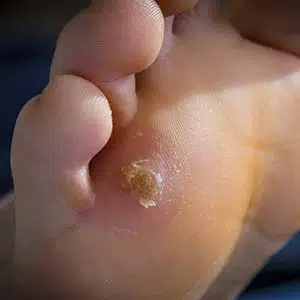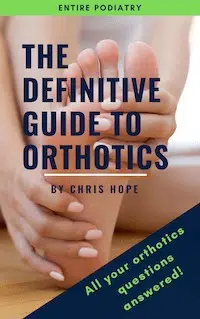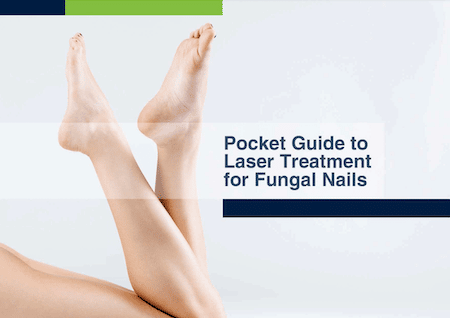What are corns and calluses on the feet?
 Corns and calluses are one of the most common foot conditions that we see and treat at Entire Podiatry. Corns and calluses are a thickening of the outer layer of skin, which occurs in response to friction, pressure or rubbing on the foot. This thickening is known medically as hyperkeratosis.
Corns and calluses are one of the most common foot conditions that we see and treat at Entire Podiatry. Corns and calluses are a thickening of the outer layer of skin, which occurs in response to friction, pressure or rubbing on the foot. This thickening is known medically as hyperkeratosis.
A small corn or callus on your feet may not cause any symptoms. However a large, bulky corn or callus can cause foot pain and difficulty walking.
It can be difficult to know for sure what are corns and calluses and how to tell these apart from other skin conditions such as warts, scar tissue, a foreign body or an ulcer. Your podiatrist will assess your lesion and provide an accurate diagnosis and conduct appropriate treatment.
Corns
Corns are usually hard and circular, with a waxy or translucent centre. At the centre of a corn is a dense knot of skin called a core, which is located over the area of greatest friction or pressure. Corns may become painful or ulcerated in response to persistent friction, pressure or rubbing.
Corns usually develop on top of or between the toes or on the soles of the feet at areas that carry a lot of pressure.
Calluses
Unlike a corn, the thickened skin of a callus is evenly distributed. There is no dense central core. Calluses usually occur on the soles of the feet, however they can also form on other parts of the body that are exposed to long-term friction. For example, calluses are often found on the hands of manual labourers and guitar players.
On the soles of the feet, calluses typically develop near the base of the toes, where there may be friction from the inside of shoes. Calluses are often related to walking problems or foot abnormalities that place unusual stresses on parts of the foot during walking.
Symptoms
The symptoms of callus and corns are as follows –
- The callus may look like a raised hardened area of skin
- The skin may be discoloured and have a glassy yellowish appearance
- A corn between your toes may have a hardened and yellow appearance, or it may feel soft, wet and white.
- You may experience pain or discomfort when walking or standing or when wearing particular shoes
- You may notice a feeling of walking on a rock or a foreign body beneath your foot
What causes corns and calluses on your feet?
Corns and calluses develop as part of the skin’s normal defence against friction and pressure on the foot. This friction or pressure can be caused by:
- Footwear which causes rubbing or pressure on part of the foot. For example, narrow, tight or ill-fitting shoes.
- Conditions which may alter the mechanics of the foot, placing excessive pressure on certain areas of the foot. For example, people with feet that roll inwards (flat feet), may experience increased pressure on the ball of the foot beneath the big toe, and the inside of the heel. A podiatry assessment will identify any abnormalities that may need correction in order to relieve excess pressure/friction on the foot.
- Previous surgery or trauma can alter structural alignment of the foot, causing excessive pressure on certain parts of the foot.
- Bony prominences on the foot (such as those caused by bunions, hammertoe or arthritis) may be more prone to rubbing/friction.
Callus on the bottom of the feet
There are many causes of callus on the bottom of the feet.
Inappropriate footwear can contribute to callus formation on the bottom of the feet. High heel shoes may place excessive pressure at the ball of the foot causing callus to build-up here. Any shoe that is quite firm and hard can also lead to callus development. If shoes are too tight or too small they can rub against the toes against the shoes creating corns.
People who spend long amounts of time on their feet or exercise frequently may also develop calluses underneath their feet.
There may also be mechanical causes for corns and callus on the balls of the feet. This means the way that your feet work and move can cause particular parts of your feet to be overloaded. For example, if you have a bunion this places more pressure under the ball of your foot in line with the second toe joint. Hammer or claw toes also place more pressure here and frequently lead to development of callus under the ball of the foot.
Occasionally calluses can develop around the arch of the foot. Calluses on the arch of the foot are less common than calluses on the bottom the foot as typically the arch is non-weightbearing, meaning that the skin of the arch is usually not in contact with the shoe or the ground. However, if you have a lowered arch or a ‘flat foot’ then the skin of your arch may rub against the shoe or press against the ground when walking causing a callus to develop. A condition called adult acquired flat foot is where the posterior tibial tendon does not work as well and subsequently the bones collapse in the arch. Painful calluses may develop on the bottom of the foot where there is increased areas of pressure. Shoes that do not fit well and are too tight across the middle of your foot may rub the foot in this area leading to a callus.
Corns and calluses on toes
Corns and calluses can develop around your toes.
Calluses on the side of your big toe can be painful and may indicate a biomechanical issue within your feet. For example, if you have a pronated or ‘flat foot’ this can change the way pressure is carried through the feet and can lead to excessive pressure and callus formation beneath and on the side of the big toe.
If you suffer from arthritis or a bunion at the big toe you may have restricted motion at this joint, known as hallux limitus. If the big toe cannot move sufficiently when walking the foot is then forced to roll off the side of the toe and this subsequently pinches the skin on the outside of the toe and creates a callus in this area.
Calluses and corns can also develop on the other toes. Toe ‘deformities’ such as claw toes, hammer toes or toes that have been affected by surgery can cause calluses and corns on your toes.
Firm, dry corns that form on the upper surfaces of the toes are called hard corns. Hard corns develop from the top of the toes rubbing on the shoes. Corns can also develop between the toes where the skin is damp from sweat or where the toes are tightly squeezed against each other. These are usually pliable, moist corns called ‘soft’ corns which develop from friction and rubbing between toes. The pressure of these corns or calluses may cause them to become inflamed, which can result in pain, swelling and redness.
The little toe is also prone to developing callus as this toe often get squished and squeezed under the 4th toe. This causes the toe to get ‘pinched’ causing a long thin line of hard callused skin beneath the toe.
Calluses on heels
Calluses frequently develop on the heels. The heels are particularly prone to developing callus as the skin here is generally thicker than other places beneath the feet. As the callus builds up cracks may form. These cracks, also known as fissures, can be very painful and are prone to developing an infection.
Causes of cracked heels
Heel callus and fissures are commonly seen in our clinics as the Queensland climate lends itself to open-shoes. Open shoes cause the skin to dry out more which makes the skin less flexible and supple and less able to withstand the stress we put through our skin when walking or standing.
Large amounts of force going through your feet can cause cracked heels. This can occur if you stand or walk for long periods. Being overweight will also place more force through your feet.
Medical conditions such as diabetes or an underactive thyroid can also cause to the skin to dry out which can lead to cracked heels. Skin conditions such as eczema or psoriasis may also predispose to cracked heels.
Why see Entire Podiatry to treat cracked heels?
Not only can cracked heels be a painful condition, if there are left untreated they are very prone to infection. If the cracks are deep they can start to bleed and become very difficult to heal without treatment. Once the hard skin is removed, the healthy skin beneath is able to heal and close any cracks that are present. At Entire Podiatry we treat cracked and callused heels by focusing on the following:
- Address the cause of the problem
- Remove the hard skin hygienically and painlessly
- Advise on what creams could be used to moisturise the area
- Advice on footwear and prevention
- Orthotic prescription if the mechanics of the feet could be contributing the callus formation.
Callus on the side of the foot
Callus on the side of the foot is usually the result of either poor footwear or your ‘biomechanics’, which is the way that your feet work.
Shoes that are too tight tend to squeeze the feet and can put pressure on the side of the foot causing the skin to thicken and callus. The shape of your foot may contributing to your callus formation. For example if you have a ‘cavus’ or a high arched foot you may carry more pressure on the outside of the foot and corns and callus may develop here. If you have a foot with bony prominences or bony ‘lumps’ then callus may also develop over these areas.
Sore calluses on feet
Corns and callus may sometimes be painless and may only be a cosmetic concern. However, if left untreated the callus thickens and the corns grow deeper and the pain usually worsens.
Painful calluses on the feet is often described as the feeling of walking on stones. The pain can get so severe you are unable to place any weight or pressure on this part of your foot.
If the callus is causing foot pain you may find yourself compensating in your gait i.e. you may walk differently in order to prevent the painful part of your foot carrying any weight. These compensatory changes can lead to pain and discomfort higher up the body, such as discomfort in the knees and hips due to limping.
Some people are more prone to developing excessive calluses on their feet known as hyperkeratosis. There is often a genetic component to this and heavy callus build-up often runs in the family.
Best treatment for corns and calluses
However tempting it may be, it is bad to pick calluses! Never try to shave or cut a corn or callus on your own, especially if you have diabetes or poor circulation. This procedure should always be performed by a podiatrist, in order to prevent damage to healthy tissues which can result in pain, infection and scarring.
After your podiatry visit your feet will be feeling soft and smooth and free of corns and callus. You may be wondering what to do about calluses on the feet so you can keep your feet soft like this for longer. There are a few simple foot care tips that you can do yourself at home in between visits to take care of calluses and slow down how quickly they build up.
Moisturising the feet regularly will keep the skin soft and supple and can slow down the rate of the callus build up. Any moisturising cream will do the trick, however a heel balm tends to penetrate deeper into the callused skin and has longer lasting effects. If you find your feet are very dry then we recommend you apply the cream at night and cover your feet with a sock or even some cling wrap and then a sock. This can help the cream get deeper in the feet and prevent it from wiping off. If you have a corn between the toes then moisturising cream will not help and may worsen the problem. The cream should only be applied to the top and bottom of the feet and not in between the toes.
Soaking the feet in warm soapy water for a few minutes each day can soften corns and calluses. You may be able to safely remove some of the callused skin at home using a pumice stone or an emery board. This works particularly well for callus around the heels. The skin may be easier to buff away after you have soaked your feet.
If you have a corn or callus that is particularly painful then modifying your footwear or using silicon protectors/pads may relieve pressure on the affected area. Your podiatrist will be able to give you specific advice on the best option for you.
You may have seen treatments offered over-the-counter at chemists which claim to be able to remove your corns. These products contain a chemical called salicylic acid which ‘eats’ away at the corn. However this acid does not differentiate between a corn and healthy skin and will begin to burn whatever it comes in contact with.
The chemicals contained in these products are very strong and if used incorrectly there is a risk that healthy skin surrounding the corn may also be affected or the acid may burn away too much skin. This can cause an ulcer or a wound to develop. This is especially dangerous for people with either diabetes or impaired circulation to the feet as any injury or ulcer on the foot has a high risk of infection and may take a long time to heal.
What does a podiatrist do for calluses
In most cases, corn and calluses treatment is simple and painless and respond well to conservative care. The first step we take is to confirm that your problem is definitely a corn or callus. Following assessment by your podiatrist, treatment options may include:
- Shaving away some of the thickened tough skin to relieve pain and pressure in the affected area. Treating corns and callus on the feet may be required on a regular basis depending on the rate at which the hard skin builds-up.
- Advice on appropriate footwear and foot care.
- Modifying footwear or using silicon protectors/pads to relieve pressure on the affected area.
- If the corns are callus are related to the mechanics of your feet, we may also recommend orthotics or shoe inserts. Orthotics can change the way the weight is spread through the foot during walking and redistribute the forces that cause friction and pressure inside your shoes. This can reduce how quickly the corns or callus return and can reduce the pain or corn and calluses.
- We will offer you advice for your ongoing care to keep your feet healthy and happy.
Surgical removal of the callus is not typically a treatment option as the hard skin can usually be removed without surgery. However, in rare cases, foot surgery may be necessary to correct the cause of the callus (e.g. correcting a bunion or claw toes) if the corns and calluses are not relieved by conservative care options.
If corns and callus are left untreated a discoloured area (brown, red or black) may develop under a large corn or callus. This discoloration is caused by a small amount of bleeding in the space between thick and normal skin. In severe cases, the thick and normal skin may separate, exposing the area to possible infection, especially in people with diabetes.
If you would like to learn more about how to treat foot corns and calluses from our Entire Podiatry team, click here.
If you need help right now give us a call on 1800 4368 473 or alternatively use our contact form.




